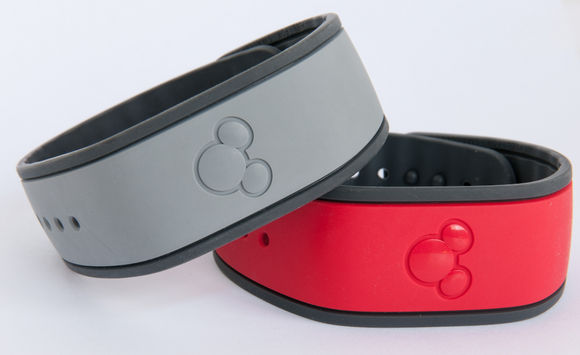Smart Watches, Wearables, and That Nasty Data Rash – Part 2
Miss part one? Read part one of the article here. Originally posted in Issue #2 of Connected on September, 7 2014. Thanks to Marco Dini for the Italian translation of the full article.
Design for Fashion
Clunky objects lend themselves to unsightly data rash. (Literally. The plastic Fitbit Force bracelet was recalled after causing allergic rashes and blistering.) As we’ve begun to dress bodies with wearable technology, the focus has been more on “technology” than on “wearable.” The industry has tended to focus on the engineering question (how can we bolt this technology onto a body?) instead of a more challenging and subtle fashion question (what if this beautiful wearable object happened to be magic?).
We should strive to create objects that people want to wear even without its built-in technology. We might love our gadgets for their special powers, but we should equally love them for their essential wearability as aesthetic objects and personal fashion statements.
Just look to our earliest wearable technologies—eyeglasses and wristwatches—for instructive inspiration. Both gained real commercial traction only when they also became fashion statements—ornamental as well as functional. Fitness fashion (rubber bracelets) and tech fashion (screens and polished titanium) are fine as far as they go, but it’s time to explore a fuller range of fashion and personality in the smart objects we intend to wear. It’s time to look smart, not just act smart.
Our clothing and accessories are personal expressions to the world. Too many of this first generation of smart objects ignore this fundamental external role. They are instead designed for a relentless inward focus, tracking data for private consumption, or displaying info intended solely for its wearer. These gadgets let us wear data, but they rarely share that data with the outside world in the traditional way that we share what we wear. Meantime, the selfie stands in for our current state of digital dress-up.
This is an observation that raises more questions than answers, but those questions all present fascinating and useful starting points for designers. What does it mean to wear data? How can I project data in a way that expresses my passions, my sense of humor, my well being, my state of mind, or whether I’m available for interaction versus feeling private?
In other words, how might we turn data from a rash-inducing assault of information to a personal expression of self?
Design for Identity
Clothing and accessories are essential to our public identity, and so their augmented versions should likewise augment and extend the broadcast of that identity. This sharing won’t always be visible, and the target of the sharing won’t always be people. Wearing data means that we expand our social circle beyond people and to the smart things and places that surround us.
Location data was what gave smartphones the magic necessary to create a mainstream wave of mobile computing. For wearable computing, identity data seems likely to be a similarly critical ingredient. Gadgets like the Nymi bracelet or Disney’s MagicBand turn our bodies into secure broadcasters of unique identity. Both use biometrics to ensure that you’re the one actually wearing them—Nymi via heart signature and MagicBand via bone density scan. By broadcasting unique identity, they open the opportunity to let us invisibly negotiate with trusted sources to wrangle anything from government services, to door locks, to payments, to restaurant reservations.

But this approach has an important secondary effect, too. When wearables focus on identity first, they can relegate a whole range of features, sensors, and data-gathering functions to other gizmos that happen to be nearby. Your bed is perhaps better suited to tracking your sleep patterns than a bracelet, for example; the bed just needs to know that it’s you who’s sleeping in it. Foursquare co-founder Naveen Selvadurai calls these embedded technologies “there-ables,” devices and sensors that are already there in the room; you just show up.
A sensible way to avoid data rash is simply to limit exposure to information allergens. Let’s find ways to reduce the number of sensors we have to wear and push them instead into the smart environment around us. Certain activities will always require wearable sensors in order to work. We have to wear pedometers or heart-rate monitors to make them go. But a whole host of location, security, and home automation features can be pushed off of our bodies and into the semi-smart environments around us.
When sensors can live near us instead of actually wrapped around us, we don’t have to wear so many of the things in the first place. How many bracelets are we expected to strap on, after all? My friend Rachel Kalmar, a data scientist, often wears over 20 smart bracelets at a time in order to make the point that most of them are at once redundant and incompatible. The emerging wearables industry can surely do better.
Alas, there’s a potentially troublesome outcome if we make wearables focus on identity in order to outsource data-gathering: it could make our identities far more public than most of us are comfortable with. When our gadgets start announcing our presence to any device in broadcast range, it’s easy to imagine those devices getting a little pushy. A subset of marketers persistently and excitedly promise a future of location-based advertising where we’re pummeled by ad messages and discount offers as we pass by storefronts or walk through shop aisles. What could be more horrific than a “service” that bombards you with ads you can never escape? This is perhaps the worst kind of information poisoning: wandering endlessly through a thick and toxic cloud of targeted commercial messaging.
And so we must take care. Managing identity, that most personal piece of data, requires respect, transparency, and the confidence to cede control to the individual.
Design for the Individual
When I talk to people about a sensor-laden future full of smart objects, the topic is greeted with equal parts excitement and dread. The dread comes from several creepy prospects: sensors everywhere (including our bodies) might create a culture of constant surveillance; our data might be used and seen in ways we don’t understand or control; and we might forfeit agency over our environments to “smart” devices that aren’t quite smart enough, buffeting us with dubious decisions.
These fears—the staples of every dystopian sci-fi movie—are about loss of control. They rail against a data environment so polluted that we no longer know how our personal information will be used or how machines might impose themselves on us.
As we design the personal services and devices that respond to the individual it’s important that we design first and foremost for the individual. Your data—and especially your identity—should be yours and yours first. You should have confidence that your personal gadgets and services operate in your interest, and not solely in the ambiguous interest of the megacorp that created them.
Services should be designed as opt-in, not opt-out. You decide which service gets access to your identity, and the off switch should be obvious and available. Wearables maven Liza Kindred suggests that services should have “nutrition labels” that clearly identify the information that they’ll use, and how they’ll use it. Who gets your data? How much of it, and for how long? Are they allowed to compare it with other people’s info? Can you make the data self-destruct? All of those decisions should be in your easy understanding and control as the person who’s making data or identity available.
Design to Amplify Our Humanity
The wearables world often uses the familiar but unfortunate language of science fiction to describe its smart devices: they “augment” or “enhance”, they are prosthetics, bionics, even cyborg extensions. This language emphasizes the technology, not the human being wearing it.
Technology should bend to our lives instead of vice versa. Instead of using the cold and creepy terms of enhancement or augmentation, I suggest wearables should aim to amplify our humanity. They should let us be who we already are, only more so. They should give us greater control, mastery, and understanding over our environment and ourselves. They should reinforce connections with the people we love and the places we visit, instead of isolating us under a torrent of data. They should draw us into the world instead of drawing our eyes to a screen.
We are suddenly awash in data, with the fresh possibility of wearing devices that are able to capture, process, and report that data. Like previous eras of technology, we’ll make missteps as we learn to use this newly abundant raw resource. We’ll sometimes create interfaces that overwhelm or irritate with the effects of data pollution and information poisoning. But if we can focus first on human needs and natural interaction, we can soothe the occasional data rash and promote healthy insight instead.
UX Leadership and Influence program
(Formerly called the How to Win Stakeholders & Influence Decisions program.)

Our 16-Week program guides you step-by-step in selling your toughest stakeholders on the value
of UX
research and design.
Win over the hardest of the hard-to-convince stakeholders in your organization. Get teams to
adopt a
user-centered approach. Gain traction by doing your best UX work.
Join us to influence meaningful improvements in your organization’s products and services.
Learn more about our UX Leadership and Influence program today!

